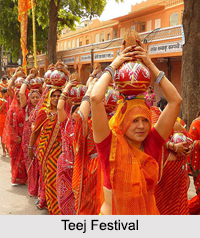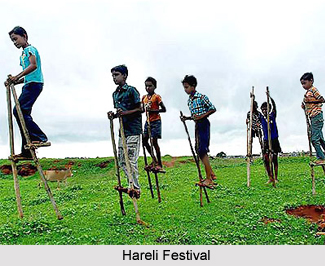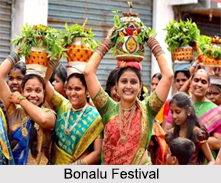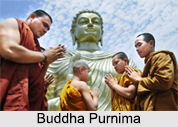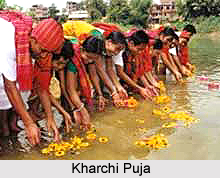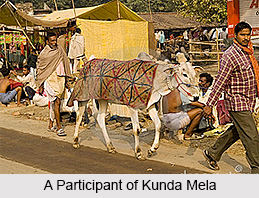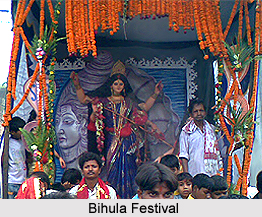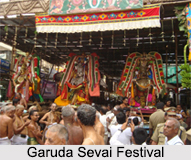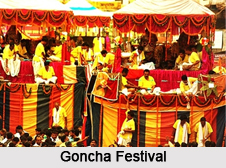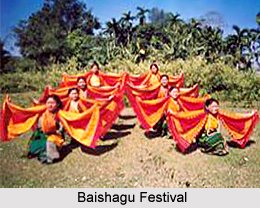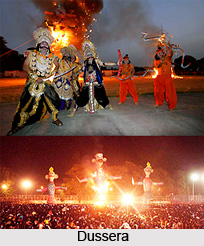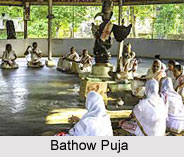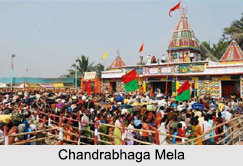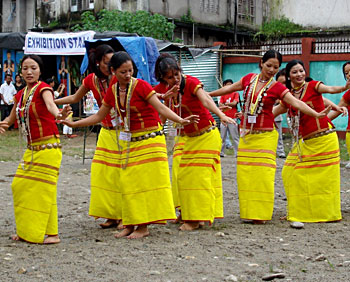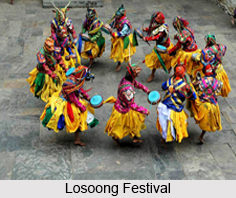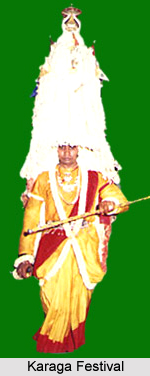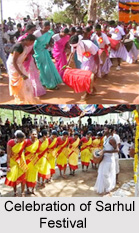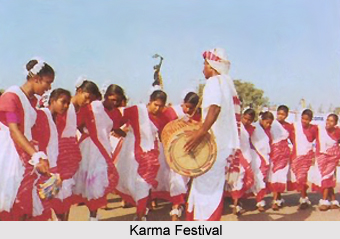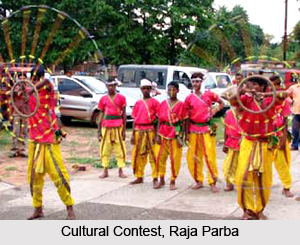 Raja Parba is also known as `Mithuna Sankranti` and it continues for four days, while the second day of the festivities indicates the commencement of the solar month of `Mithuna` and it is from this very day that the season of monsoons starts. The agricultural year is welcomed throughout the eastern Indian state of Odisha through this festival. Raja Parba, in other words, marks the moistening of the parched soil by the very first, cool monsoon showers during the middle of the month of June thereby making it more productive for the plantation of crops. Raja Parba is celebrated with intense enthusiasm in the districts of Balasore, Cuttack and Puri.
Raja Parba is also known as `Mithuna Sankranti` and it continues for four days, while the second day of the festivities indicates the commencement of the solar month of `Mithuna` and it is from this very day that the season of monsoons starts. The agricultural year is welcomed throughout the eastern Indian state of Odisha through this festival. Raja Parba, in other words, marks the moistening of the parched soil by the very first, cool monsoon showers during the middle of the month of June thereby making it more productive for the plantation of crops. Raja Parba is celebrated with intense enthusiasm in the districts of Balasore, Cuttack and Puri.
Mythology of Raja Parba
It is said that Mother Earth who is revered as a Goddess undergoes menstruation for the initial three days of the festival and is offered the traditional bath called `Vasumati Gadhua`, or bathing of the `Bhudevi`. The word `Raja` is derived from the term `Rajaswala`, meaning a woman who is menstruating. The festival gained much more popularity especially during the medieval ages which marked an agricultural holiday, for the worship of Bhudevi, the wife of Lord Jagannath. The Puri Temple at Odisha possesses a silver idol of Bhudevi, which is placed beside Lord Jagannath.
Rituals of Raja Parba
Raja Parba is celebrated in mid-June and the first day is called `Pahili Raja`, second day is termed as `Mithuna Sankranti` and the third day is called `Basi Raja` or `Bhu Daaha`. `Vasumati Snaan` is the fourth day during which the womenfolk bathe the grinding stone which signifies Bhumi Devi. Turmeric paste, `sindoor` and flowers are offered to the idol, apart from seasonal fruits. `Sajabaja` is the day prior to the first day of the festival and on this day the grinding stones are cleaned and spices ground for the next three days.
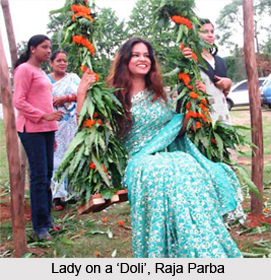 The womenfolk discontinue their household chores during the three festive days and instead spend their time playing some indoor games. Unmarried young girls adorn themselves with the aide of traditional sarees or new fashionable garments and also apply `Alatha` in the feet. People do not walk barefoot on the earth during these three days and delicious `pithas` consisting of `Chakuli Pitha` and `Podopitha` are prepared. People indulge in several outdoor and indoor games. Girls are fond of playing on swings which are fastened to the branches of trees and the elderly ladies play `Ludo` and `Cards`. `Kabaddi` matches are conducted amongst young men during this time.
The womenfolk discontinue their household chores during the three festive days and instead spend their time playing some indoor games. Unmarried young girls adorn themselves with the aide of traditional sarees or new fashionable garments and also apply `Alatha` in the feet. People do not walk barefoot on the earth during these three days and delicious `pithas` consisting of `Chakuli Pitha` and `Podopitha` are prepared. People indulge in several outdoor and indoor games. Girls are fond of playing on swings which are fastened to the branches of trees and the elderly ladies play `Ludo` and `Cards`. `Kabaddi` matches are conducted amongst young men during this time.
The unmarried girls are imparted various forms of lessons which are necessary for a prosperous married life, and matrimonial duties are taught to them through the festival. They spend the three days in entertaining activities and traditions like consuming Podapitha and other forms of uncooked foodstuffs are eaten, which must not contain salt. They are not permitted to take bath during these three days and do not walk barefoot. They take vows to give birth to healthy offsprings in the future. The girls awake much before dawn, tidy their hair, moisten their bodied with turmeric paste and oil, and finally bathe in a river or tank. They cannot take bath for the following two days. The girls are asked not to cook, cut, grind or tear anything apart and decorate themselves in beautiful attires. People eat uncooked food at the houses of their relatives and friends and enjoy their time on improvised swings, breaking into folk songs. `Charki Doli`, `Ram Doli`, Dandi Doli` and `Pata Doli` are the different names of the swings.
Menstruation symbolises fertility in women, just compared to menstruating Mother Earth for three days. All agricultural chores are suspended during the three days as She is allowed complete rest. In Hindu households, menstruating women are not permitted to participate in the festival who are isolated as they are considered `impure`. They are asked to take good rest.
Young men, on the other hand spend their leisure in various kinds of games and delicious food, on the eve of the commencement of the monsoons. The next four months would keep the young menfolk quite busy when they would have to toil in the wet, muddy fields hoping for a pleasant harvest. Country games and Kabbadi are played by the young men of the village and numerable contests are also held. `Gotipua dances` and `Yatra` acts are organised in villages which can afford them.
